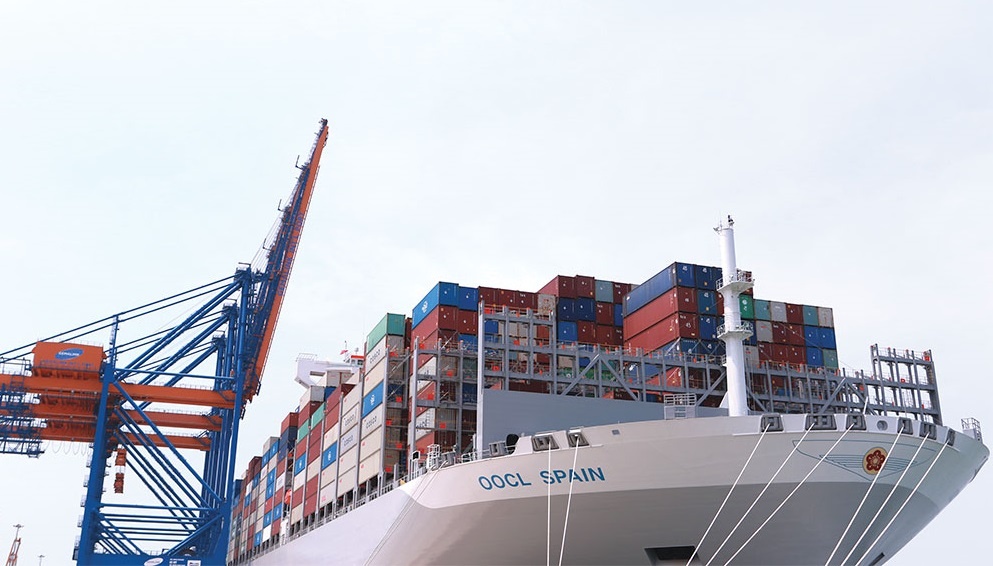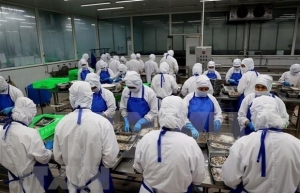Addressing the weaknesses in trade and supply chains
It is true that the economic and political environment, and the climate crisis, are exposing some weaknesses in the global trading system. But that should be the impetus to improve it, not abandon it. Improving global trade and supply chains means making them more resilient and inclusive, and developing them as a vehicle for a greener and more equitable future.
 |
| Steven Beck - Head of Trade and Supply Chain Finance, Private Sector Operations Asian Development Bank |
While the complicated and inter-twined global trading system has room for improvement and requires scrutiny, it remains the best hope for future growth, especially in developing countries. If the pandemic and current political and economic circumstances exposed weaknesses, they have also highlighted how ripe the system is for the changes that would benefit all.
What is needed is a significant review of the global trading system. Firstly, committed efforts to transform trade from the antiquated, paper-based system used to move goods worldwide for hundreds of years is one critically important and meaningful step that can and should be taken globally. That system, which in many countries remains in place by law, needs to become digital.
Digitalising trade – replacing paper documents with electronic ones – would mean lower costs and make trade easier, opening trade to new entrants, including small suppliers in developing economies.
The data generated would allow for better monitoring of global supply chains so that issues such as climate change/carbon tracking and proper labour standards could be facilitated, at even the smallest suppliers. Financial crime would be easier to detect.
A vital step in digitalising trade is for countries to bring their legal systems into an alignment that does not demand multiple paper documents to accompany each trade shipment. To that end, the United Nations Commission on International Trade Law has developed a law on electronic transferable records for countries to adopt, or to which they could align their current legal systems.
Secondly, we need to ‘green’ trade. McKinsey estimates that more than 80 per cent of greenhouse gas emissions and 90 per cent of the adverse impact on air, land, water, biodiversity, and geological resources are connected to trade and supply chains. It is imperative that we see deep into these networks to track, report and address carbon in supply chains. Barcode and QR code technology can help align climate and sustainability standards, as well as collect and transmit data about such standards.
The International Financial Reporting Standards are integrating climate reporting into company financial reporting across 176 jurisdictions and GS1 – a non-profit global organisation in charge of the standards that make barcode technology possible – is in the process of templating into bar/QR codes the impending carbon reporting standard for products around the world.
Together, these partners will facilitate tracking and reporting carbon emissions throughout far-reaching global supply chains. This will include addressing the complex challenge of Scope 3 emissions tracking. If we don’t green trade and supply chains, we won’t achieve our climate goals.
Thirdly, greater transparency in trade can also spread equitable access to finance and drive greater inclusion in the global trading system. A relatively new variation of financing called deep-tier supply chain finance leverages the track records and connections of big buyers to channel finance to the smallest links in supply chains. Those links are the small- and medium-sized companies that provide most of the jobs in Asia’s developing countries. They are the backbone of most economies around the world.
 |
| Even traditional sectors are taking on significant reviews in order to digitalise trade and make it greener, photo: Le Toan |
Risks have risen, prompting financial institutions to reduce support for trade, with small businesses and emerging markets being hit hardest. Local currency values have fallen, in some cases dramatically. Together with higher interest rates, that makes servicing hard currency debt more difficult and much more expensive. The strain can be seen through dwindling foreign exchange reserves, which are also being hit by fewer remittances as overseas workers are reluctant to send money through official channels with local currency values plummeting.
High prices for fuel, food, and other global commodities are straining currency reserves further, especially for countries that rely on imports. And inflation in commodities and other goods reduces the real value of what country and counterparty limits exist to support trade. Perhaps the most worrying factor is the spectre of global recession, which could cut demand even further for exports produced in emerging markets.
The global trade finance funding gap has already widened to well over $2 trillion. That growing gap strangles the potential of trade to deliver human and economic development, to create jobs and boost growth.
Multilateral development banks have elevated their support with more guarantees and loans to back trade, which also helps draw in more private-sector participants by attaching their strong credit ratings to deals that otherwise would not get done. But support from multilateral institutions is at best only a tiny stopgap measure for global trade and supply chains.
Trade has lifted millions of people out of poverty and improved living standards. More than a tweak is required to address weaknesses in global trade and supply chains, both because of the current challenging economic environment, and due to challenges like climate change and a need for greater inclusion in the global economy. The time is ripe for governments and the private sector to address weaknesses in global trade and supply chains. We have solutions, we just need to implement them. Throwing the baby out with the bathwater is not the answer.
 | Business integrity passport to global supply chains Experts are urging Vietnamese firms to incorporate integrity principles into their corporate governance since they believe business integrity would be the passport to global supply chains. |
 | RCEP creates new impetus for regional economic development Since it entered into force in early 2022, the Regional Comprehensive Economic Partnership (RCEP) has helped strongly promote integration of value and supply chains, strengthen confidence in regional economic recovery and create new impetus for trade and investment growth in the region and the world, according to an article on the Zhongguopinglun (China review) website of Hong Kong (China). |
 | Helping small businesses to support global supply chains The lack of credit for small- and medium-sized enterprises to participate in global trade is stifling growth and making supply chains more vulnerable. |
What the stars mean:
★ Poor ★ ★ Promising ★★★ Good ★★★★ Very good ★★★★★ Exceptional
Related Contents
Latest News
More News
- Global partnerships key to Vietnam’s IFC development (December 26, 2025 | 16:18)
- Vingroup pulls out of bid to invest in North-South high-speed railway (December 26, 2025 | 11:42)
- Strengthening supply chains through trade promotions and customs reform (December 24, 2025 | 14:00)
- PM orders investment model for North–South high-speed rail (December 22, 2025 | 17:43)
- LS Eco Energy to invest in Vietnam rare earth sector (December 22, 2025 | 17:31)
- Government moves to establish International Financial Centre (December 21, 2025 | 21:00)
- Vietnam's IFC to target global investment flows (December 21, 2025 | 18:00)
- Two national hospitals expand capacity with new facilities (December 20, 2025 | 09:00)
- Ha Tinh breaks ground on major Vingroup industrial and energy projects (December 19, 2025 | 18:24)
- EVN launches major power infrastructure projects nationwide (December 19, 2025 | 18:17)

 Tag:
Tag:




















 Mobile Version
Mobile Version